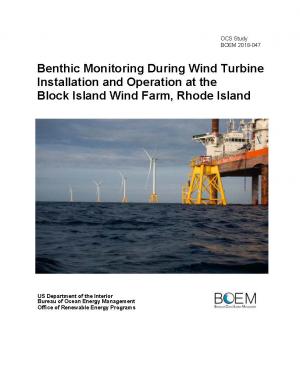Key Researchers: M. Bartley, P. English, J. King, A. Khan
The placement of structures that have hard surfaces provides an environment for marine life to attach and flourish. The growth on the structure, in turn, provides a source of organic matter to the seafloor which nourishes marine life on and in the seabed. The nature and potential spatial and temporal scales of alterations in benthic macrofaunal communities because of the long-term placement of the turbine foundations were studied. Key community characteristics evaluated included species abundance, richness, and assemblage structure, along with relationship dynamics between macrofaunal communities and their associated environments. Three turbine locations were selected for sampling based on their representativeness of the biotopes present in the study area.
Findings
- There are no substantial differences in benthic communities among turbine areas
- There are no significant differences in benthic communities or total organic carbon levels close to turbine foundations compared to those further away
- Only one year is represented and this forms a baseline established for future evaluation
How BOEM will use this information
- Evaluate of environmental effects of future wind facilities
Provide useful information on the effects of jacket type foundations, which are generally unrepresented in European studies


